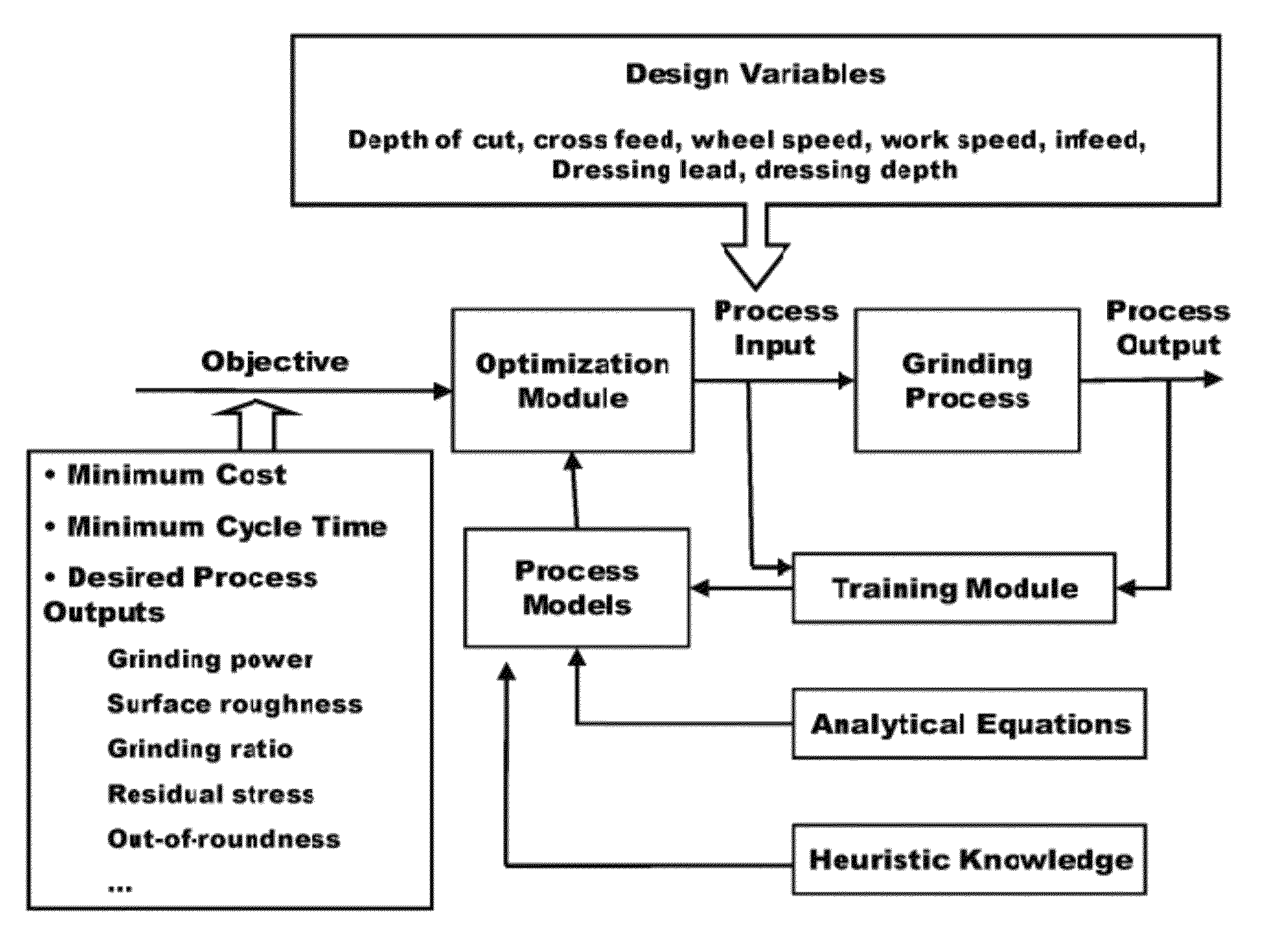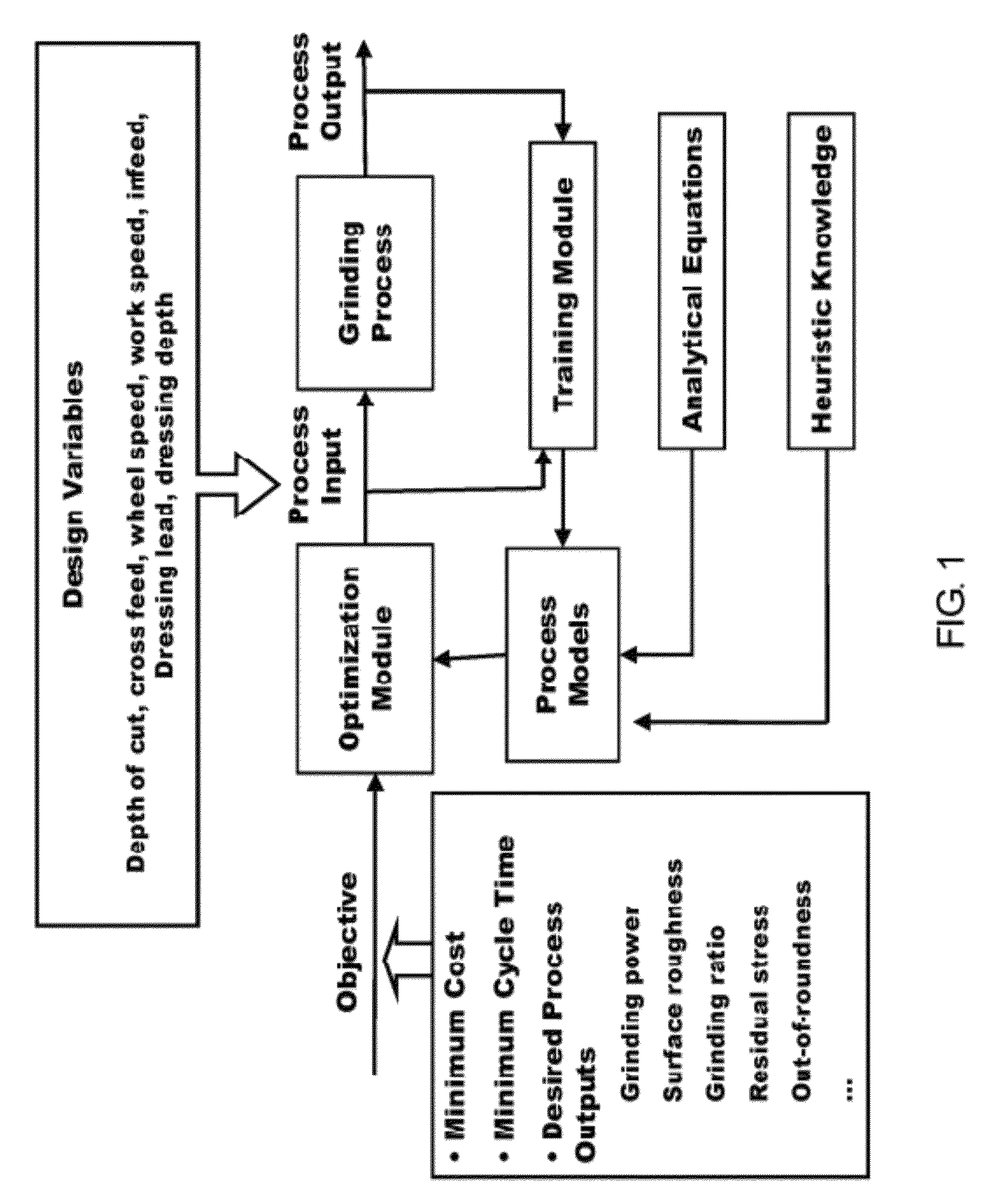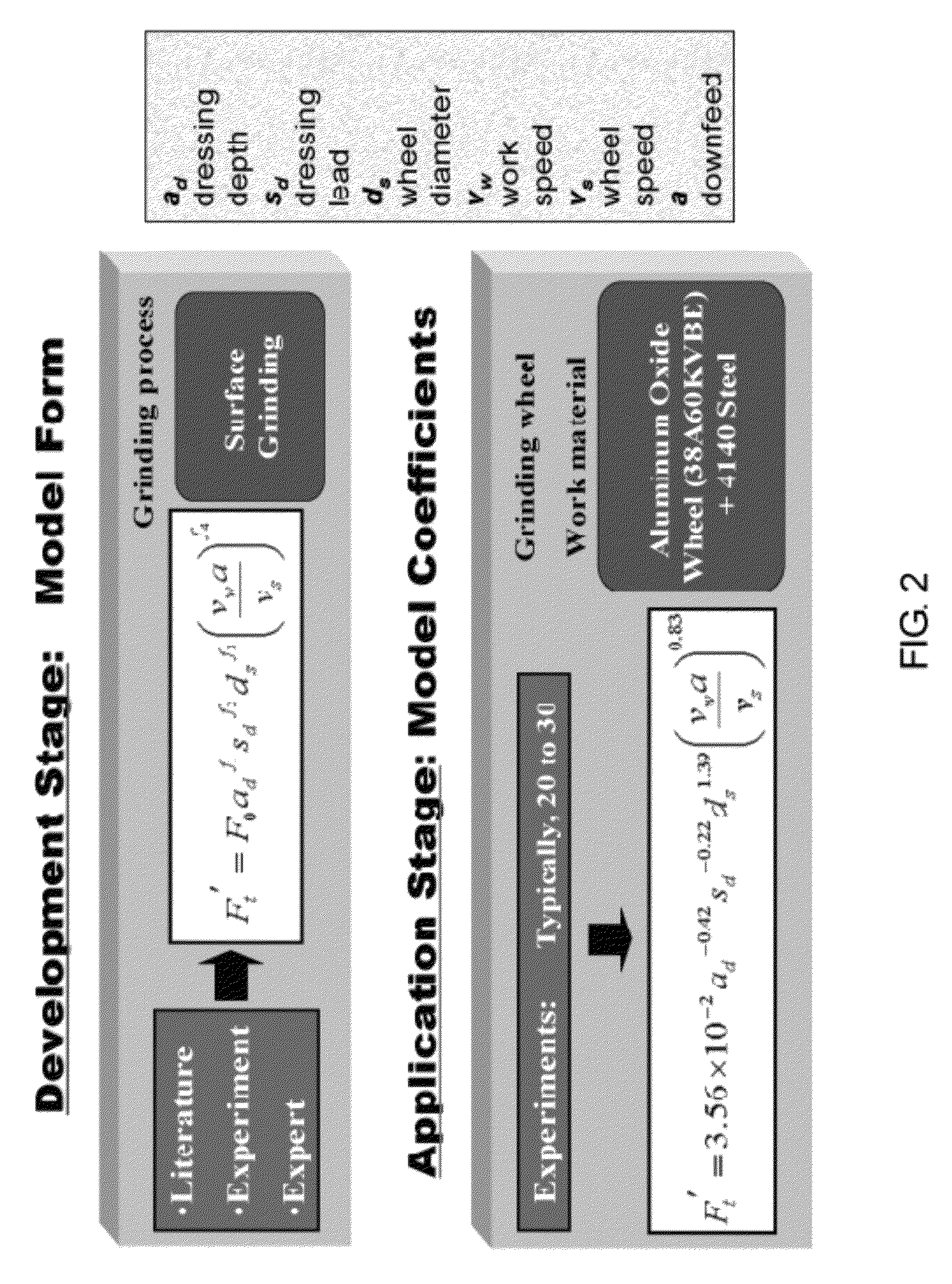Intelligent optimization method and system therefor
a technology of intelligent optimization and optimization method, applied in the direction of program control, total factory control, dynamic tree, etc., can solve the problems of inability to optimize the grinding process, and inability to achieve optimal grinding conditions
- Summary
- Abstract
- Description
- Claims
- Application Information
AI Technical Summary
Benefits of technology
Problems solved by technology
Method used
Image
Examples
Embodiment Construction
[0031]The present invention utilizes the Generalized Intelligent Grinding Advisory System (GIGAS) proposed by Lee (2000), supra, in a methodology applicable to grinding processes to achieve objectives identified by a user. FIG. 1 is a flow chart representing GIGAS used in a model-based optimization approach in which objectives of a grinding process are used as inputs to an optimization module. FIG. 1 includes a nonlimiting list of potential objectives, such as manufacturing cost-related considerations (costs, cycle times, etc.) as well as requirements more directly related to the final article produced by the grinding process (grinding power, surface roughness, grinding ratio, residual stress, out-of-roundness, etc.). One or more objectives can be used as inputs to the optimization module as process constraints, a notable example of which would be the required final surface roughness for the article.
[0032]As evident from FIG. 1, the optimization approach also uses process models as ...
PUM
 Login to View More
Login to View More Abstract
Description
Claims
Application Information
 Login to View More
Login to View More - R&D
- Intellectual Property
- Life Sciences
- Materials
- Tech Scout
- Unparalleled Data Quality
- Higher Quality Content
- 60% Fewer Hallucinations
Browse by: Latest US Patents, China's latest patents, Technical Efficacy Thesaurus, Application Domain, Technology Topic, Popular Technical Reports.
© 2025 PatSnap. All rights reserved.Legal|Privacy policy|Modern Slavery Act Transparency Statement|Sitemap|About US| Contact US: help@patsnap.com



